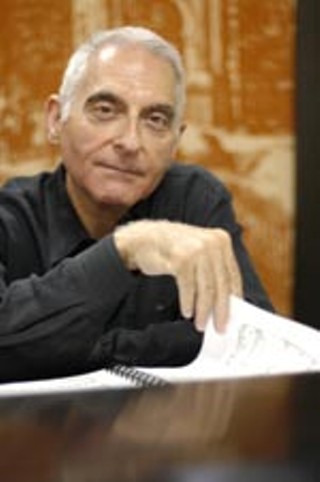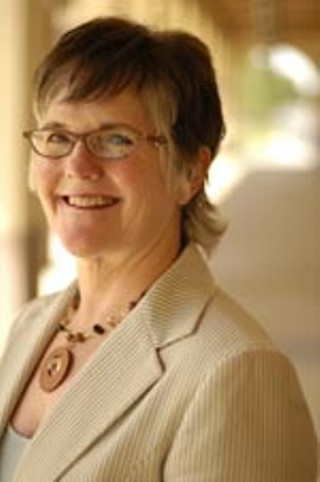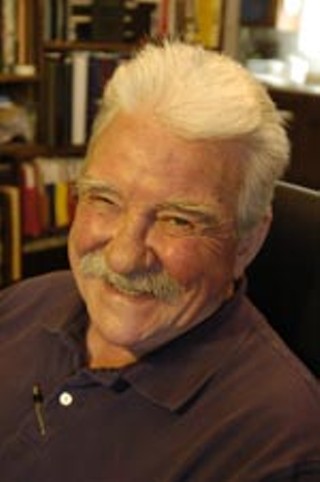Showing the Way
The 2006 class of the Austin Arts Hall of Fame
By Robert Faires, Fri., June 2, 2006
The induction of the 2006 class of the Austin Arts Hall of Fame will take place at the 2005-06 Austin Critics Table Awards ceremony on Monday, June 5, 7pm, at the Cap City Comedy Club, 8120 Research.
Ada Anderson
One thing that was always clear to Ada Anderson: Expose a young person to the arts, and you set that young person on the road to success. That was the spark behind the Leadership Enrichment Arts Program that Anderson founded as part of an educational-outreach program for Austin Lyric Opera. Since 1989, LEAP has given more than 2,000 African-American and other minority youth the chance to experience opera, ballet, the visual arts, and other cultural resources as a means of helping them develop both personally and academically. It's possible that the program's seeds were planted while Anderson was getting her master's in educational psychology from UT, but it's equally likely that they came from her own history, growing up in a household where music and art were treasured and seeing their influence on her as she became a successful businesswoman – founding Anderson/Wormley Real Estate with her husband Andy in the 1950s – and a tireless advocate for civil rights and education. Like her efforts in those fields, Anderson's work to promote the arts has spanned decades: founding LEAP, serving as a founding board member of Austin Lyric Opera, spending 15 years on the board of Laguna Gloria Art Museum, chairing that board, and sitting on the board of the Long Center for the Performing Arts. Among honors too numerous to list here, she has been elected to the Texas Black Women's Hall of Fame and the African-American Women's Hall of Fame, has received the Leadership Award from the Austin Chamber of Commerce Business Committee on the Arts and the Leadership in Civil Rights Award from the LBJ School of Public Affairs, and was given the Austin's Most Worthy Citizen Award by the Austin Board of Realtors in 2004.

Charles W. Moore
All it takes is one visit to the Charles Moore House to understand its creator's vision of architecture and the impact he's had on the field and this community. Its densely packed interior, extravagantly colored and patterned and meticulously filled floor-to-ceiling with books, toys, folk art, models, and masks, radiates an infectious joy and belief in the power of place both to reflect lives and to transform them. By the time he came to Austin, Moore was already a celebrated architect, author, and educator, whose innovative approach in works such as Sea Ranch, the San Francisco recreational community; and the Yale Building Project, a teaching tool for first-year graduate students at the Yale School of Architecture, marked him as a pioneer and leader in his field. After an academic career that included Berkeley, Yale, and UCLA, Moore was lured to UT-Austin, where he taught from 1984 until his untimely death in 1993. While here, Moore established a travel/study program to enable architecture students to sharpen their sense of place in relation to building design, and he was honored with the AIA/ACSA Topaz Medallion for lifetime achievement in architectural education and the American Institute of Architects' Gold Medal for the significance of his contributions to architecture – the latter so prestigious an award that the Tower was lighted orange in Moore's honor. He formed the professional partnership Moore/Andersson Architects with Arthur Andersson, from which came the extraordinary compound that includes the house that bears his name. As his final residence and workplace, the Charles Moore House has been preserved as a center for the study of his architectural ideas and projects.

Robert DeSimone
When Robert DeSimone arrived in Austin to direct Dialogues of the Carmelites for UT Opera Theatre, he thought he'd be here for a year or two at most. Twenty-three years later, he's still here, still directing operas at UT (most recently, Dialogues of the Carmelites, coincidentally enough) and still giving university students invaluable preparation for an operatic career. Considering that DeSimone originally studied to be a concert pianist and spent four years being trained in the dramatic arts at the Sadlers Wells Theatre in London, his long stay deep in the heart of Texas may seem surprising. But clearly UT Opera Theatre has been a good fit for the director, who built on the strong foundation established by its first director, 2003 Austin Arts Hall of Fame inductee Walter Ducloux, and made the program recognized throughout the land. Under DeSimone's leadership, UT Opera Theatre has become distinguished by the quality of its productions and diversity of its repertoire, most notably its strong emphasis on 20th-century operas and works of musical theatre and its promotion of new works, which have included the American premiere of Luis Jaime Cortez's La Tentación de San Antonio and the world premieres of The Scarecrow, by Joseph Turrin; The Old Majestic, by Robert Xavier Rodriguez; Bandanna, by Daron Aric Hagen; Cynthia Parker, by Julia Smith; and operas by UT composers Donald Grantham (The Boor) and Dan Welcher (Della's Gift and Holy Night).

Jessie Otto Hite
Few folks can claim more of a stake in the Blanton Museum of Art than Jessie Otto Hite. Her affiliation with the museum goes all the way back to 1979, when it was still called the Huntington Art Gallery, and its home space in the UT Art Building was so small that its showpiece collection of 20th-century American art – a gift of author James Michener and his wife Mari – had to be housed all the way across campus in the Ransom Center. At the time, a career in the visual arts was still a new concept for Hite, who had done her undergrad study in childhood education before opting to pursue a graduate degree in art history. She was offered a part-time job at the Huntington as a curatorial assistant, but within a few years she advanced to assistant curator and then assistant director of public affairs. She was named museum director in 1993, just in time for the university to begin serious discussions about the construction of a new home for the Huntington. Over more than a dozen years (and through four different UT presidents), Hite has shepherded that dream to reality, and her tenure has seen not only the transformation of the Huntington into the Blanton Museum of Art, complete with just-opened gallery building and soon-to-come administrative building on the southern edge of campus, but the Blanton's acquisition of two major art collections: the Suida-Manning Collection of Renaissance and Baroque Art and the Leo Steinberg Print Collection.

David Nancarrow
Where would the theatre be, asks the old joke, without a lighting designer? In the dark goes the punchline, but there's much more to it when the lighting designer in question is David Nancarrow. Without him, Austin would be without an artist who understands light the way a painter understands paint. Nancarrow's employment of its color, textures, presence, and absence to create setting, atmosphere, and drama has illuminated – in every sense of the word – works of theatre, dance, and opera in the dozens of productions that Nancarrow has designed through his 40-plus years in Austin. And that mastery has been apparent not only in his own design work but in that of the student designers that he taught during his more than four decades on the faculty of the UT Department of Theatre & Dance (a career that earned him the College of Fine Arts Student Council Teaching Excellence Award in 1980 and 1990). Born and raised in England, Nancarrow came to Austin after earning degrees at the University of Virginia, the Yale School of Drama, and the Shakespeare Institute of the University of Birmingham, England. In addition to his work for departmental productions, Nancarrow has designed locally for Ballet Austin, Actor's Repertory of Texas, the State Theatre, and Austin Theatre Alliance and has served as resident lighting designer for Austin Lyric Opera since its launch in 1987, designing 48 of their productions, including this past season's Il Trovatore and Lady Macbeth of Mtsensk. He's also occasionally worked himself onto the stage, proving himself a winning actor in such shows as Holiday and Time Again in Oz.

Ken Webster
Like the wandering cowpoke in an old Western, Ken Webster has always gone his own way. While the veteran actor and director has worked for companies all across the city, from the State Theatre to Big State Productions to children's theatre company Project InterAct, he's devoted most of his creative energies – and made his largest contributions to our arts scene – through his own small, independent theatre companies. In fact, in the early Eighties, when a wave of new theatre companies broke on the scene, Webster was there with one of the most vigorous ones, Performing Players of Austin, presenting gutsy new plays out of Chicago and paying actors at a time when community theatre was still the norm. Webster championed Mamet, Shepard, and Durang when most locals still didn't know their names, much less their plays, and he has continued to introduce Austin audiences to daring new theatrical voices, such as Rebecca Gillman and Daniel MacIvor. As a director, he's always liked to match offbeat, edgy scripts with gifted actors unafraid of taking risks. Perhaps they take their lead from Webster himself, who has always distinguished himself as an actor of boldness and force, never more so than when holding the stage alone, as in Eric Bogosian's Sex, Drugs and Rock & Roll, and Daniel MacIvor's House. Given how many shows he's staged in the storefront theatre on West 43rd (with Performing Players and its successor, Subterranean Theatre Company), it's fitting that Webster has for five years been artistic director of Hyde Park Theatre.

Rodolfo Méndez
In Ballet East Dance Theatre, Rodolfo Méndez created a community arts organization in the truest sense of the term: Its work is as much about the community as the art; the two are inextricably intertwined. Méndez's vision for the company grew out of his experiences as a Peace Corps worker in Costa Rica and Chile, where he helped develop dance and theatre programs for students in primary and secondary schools. After returning to Texas, the Austin native founded Ballet East in 1977 and has been bringing dance to underserved communities in his hometown ever since. The company provides a crucial training ground for young dancers and choreographers on the Eastside, giving them a place where they can develop their skills and flourish, working in a variety of modern styles with guest artists that range from local choreographers with Ballet Austin and the UT Department of Theatre & Dance to national dance makers from the Alvin Ailey American Dance School, Joyce Trisler Danscompany, and Philadanco. To see the effectiveness of Méndez's efforts, one need look no further than Ballet East's assistant artistic director, Melissa Villarreal, who got her start dancing with Méndez at age 14. Since 1989, Méndez has also reached more than 5,000 young Austinites through Dare to Dance, a theatre/dance program that uses performance to enhance a child's self-assurance and critical thinking skills and has been repeatedly recognized by the President's Committee on the Arts and the Humanities as an outstanding arts education program.








